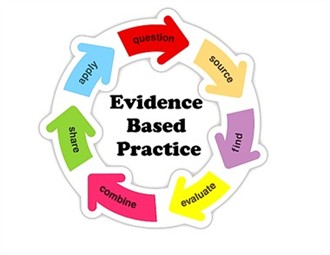There is perhaps no more frequently used term in the child welfare field today than “evidence-based practice.” In this series of posts, we look at the definition and evolution of evidence-based practice, why it is important, where IFPS fits in, and how one state is implementing evidence-based practice.
In 2005 the National Association of Public Child Welfare Administrators (NAPCWA) published guidelines for evidence-based practice. NAPCWA noted the following issues surrounding evidence-based practice:
- The base of solid empirical research on child welfare practice is still developing.
- Child welfare practices cannot simply be divided into “evidence-based” and “non-evidence based.” There is a continuum from highly research supported practice at one end to very questionable and concerning practices at the other end.
- There is no universally accepted definition or classification of evidence-based practice.
NAPCWA adapted a definition of evidence-based practice from the Institute of Medicine that combines three factors:
- Best research evidence
- Best clinical experience
- Consistent with family/client values
In order to operationalize these factors and provide objective measures, the California Evidence-Based Clearinghouse for Child Welfare (CEBC) was established. A practice is rated based on the following criteria:
1. Well-Supported by Research Evidence
2. Supported by Research Evidence
3. Promising Research Evidence
4. Evidence Fails to Demonstrate Effect
5. Concerning Practice
NR. Not able to be Rated
The CEBC relies on published, peer-reviewed research to determine the rating.
Why is using an Evidence-Based Practice important?
A CEBC advisory committee member’s response to that question follows.
Evidence-based practice:
- Ensures that families are referred to the most effective and efficacious programs that the community provides.
- Helps child welfare workers and supervisors empower families in crisis to resolve their own conflicts, using well-tested programs.
- Allows child welfare workers to refer families to services that have been scientifically researched and proven effective, which in turn may cause the families to make a greater commitment to participation.
- Provides child welfare workers with a better understanding of the range of programs available so they can make informed choices when referring families to services.
How does IFPS fare in the CEBC rating system?
Homebuilders® IFPS has been rated by the CEBC in the areas of:
- Interventions for Neglect,
- Post-Permanency Services,
- Reunification,
- and Family Stabilization.
The rating assigned to each of these areas is a “2” with a detailed report available. (Click here to view one of these detailed reports.)
The CEBC website ( http://www.cebc4cw.org/ ) is user-friendly and contains a wealth of information about evidence-based practice and programs. Because IFPS is an evidence-based practice, the IFPS field should be aware of and support other evidence-based practices. Be sure to check out the CEBC website!
Next time we’ll look at how one state has implemented evidence-based practice that includes IFPS.
_______________
Posted by Priscilla Martens, NFPN Executive Director

